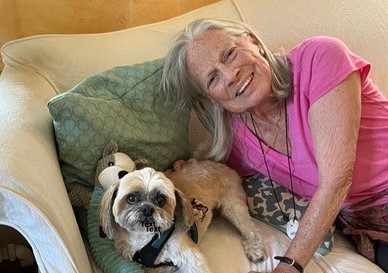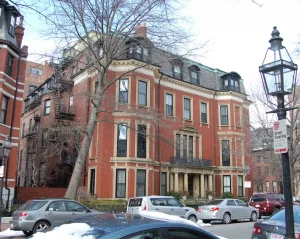
August 16, 2022 Remembering Marcia Myers
Historic Boston was saddened to learn of the recent passing of Marcia Myers, 81, a pioneering preservation planner in Boston and a long-serving member of HBI’s Board of Directors. Marcia was the first director of the Boston Landmarks Commission and, as staff to the Boston Redevelopment Authority in the 1960s, was instrumental in asserting historic preservation into the agency’s urban renewal-era planning. Marcia was also a member of Historic Boston’s Board of Directors from 1979 until 2005.
Marcia and her husband David Myers donated a preservation restriction to HBI in the 1980’s for the historic Cushing Endicott House, built in 1871 in Boston’s Back Bay, which they had carefully preserved and lived in for many years. In the following 2019 email from Marcia to architectural historian Ben Bergenholtz, she recalled the work that she and David undertook at the Back Bay mansion, and some insights into the founding of HBI:
Hello Ben,
After living in the South End for about ten years, and rehabilitating a house there, David and I were looking for a new challenge. We found that the Cushing Endicott house was for sale, as the market for private dormitory living had collapsed with the move from the Back Bay of one of the colleges which had been located there. (I don’t recall which one). It was our intention to rehabilitate the house for our residence and also several apartments. As I recall, we initially lived on the first floor (ground level) with our bedroom being located in the old kitchen. The floor above was our living room, dining room (the middle room) and a more casual sitting room in the room with the ebony trim. We created a small kitchen (with a balcony!) in the original pantry. The basement became an apartment opening to the courtyard, and then there was an apartment on the third floor. Eventually, we took over the third floor for our bedroom.

From around 1975 until 1985, I was the Director of the Boston Landmarks Commission. During my tenure there, the BLC hired Stanley Smith to develop a preservation revolving fund for Boston. Stanley became aware that Historic Boston Inc. existed but was totally inactive. He recommended that “we” take over the organization and revive it. The board of HBI agreed to the concept, and accepted nominations to the board from the BLC. Polly Harrell (chairman of the BLC) and I were two of the board members added. I think Paul McDonough was added at that time as well, and SPNEA added two members.
When David and I began to contemplate selling the Cushing Endicott House, mostly due to the very high real estate taxes which came about as a result of a new assessment policy, we naturally wanted to protect the building. While the exterior was protected as part of the Back Bay Architectural District, the interior was not. So we started working with HBI staff to come up with an easement over portions of the building, notably the spaces which had been called out in The Houses of the Back Bay. At that time, we also turned over to HBI, for safe keeping, the dining room chairs and the decorative bowls which had been in the old dining room. And we made a donation to HBI to assist with the management of the easement. As you know, the building was eventually developed for condominiums, HBI had to approve the plans for the conversion as it pertained to the protected features.
I hope this clarifies this part of the story of the Cushing Endicott House. Don’t hesitate to contact me if you have further questions, especially about the condition of the house as we found it and what changes we made. I have never seen the results of the condominium conversion and subsequent ownership, but I have confidence that HBI has made sure that the integrity of the building has been maintained. It was an extraordinary opportunity for us to live there and to pass it on to the next owners with some protections in place. I look back on our experience there with great fondness.
Best regards,
Marcia
January 29, 2019



